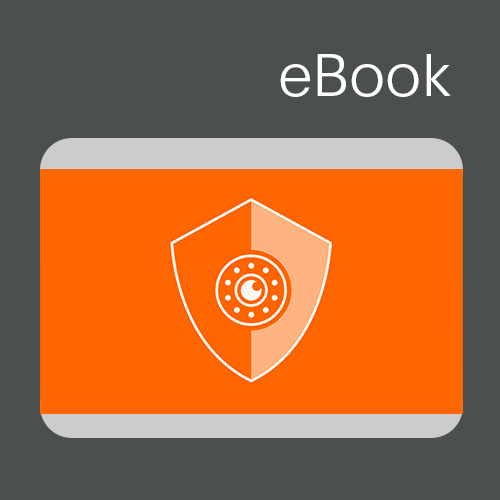What is a war room?
A war room is a place (either in-person or virtual) where responders and stakeholders can gather to work through a major incident. When a major incident occurs, many teams prefer to gather all subject matter experts (SMEs) to resolve the problem as quickly as possible. Having everyone in the same space can decrease the chances of lapses in communication or delays in coordination.
War rooms in the technology industry originated as a key part of adopting Agile Methodology. Agile Methodology is guided by values and principles that aim to produce an efficient, working product in short increments, but more so emphasize the importance of human capabilities, such as adaptability and communication, within an interdependent team. War rooms are meant to improve these human capabilities, allowing teams to communicate and adapt quickly during incidents.
“War room” often conjures images of the military (the originating term being used for this purpose), walls full of monitors, and even NASA’s mission control. But in reality, things have changed greatly over the past few years.
Before the rise of remote work, many teams had physical war rooms within their offices. These were conference rooms that were purposefully arranged and stocked for major incidents. However, as many organizations shift to distributed teams, this version of the war room is becoming less common. Instead, virtual war rooms are how many teams now communicate during response.
What is the purpose of a war room?
War rooms are helpful when a larger number of people are needed to resolve an incident, and when cross-functional involvement is necessary. If teams are working separately on the same issue, it can lead to miscommunication and prolong the issue. War rooms allow all teams to drive towards a resolution together, communicating and adapting quickly.
However, not every incident is worthy of a war room, and organizations will need to determine the threshold for when a war room is necessary. For instance, a priority 1 or 0 may indicate a war room is needed, but anything less urgent can be handled by the team normally. Or perhaps an organization will determine that if an incident involves 3 or more teams, a war room is required to help promote cross-team collaboration.
It’s important to note that war rooms are not the same as company meetings. War rooms are for the sole purpose of resolving major incidents to mitigate impact. Unlike meetings, these cannot be scheduled in advance, as incidents are unpredictable. Because of this, it can help to have a designated space for war rooms in-office, or a specific virtual setting that’s reserved for this purpose.
Benefits of an Agile war room
As Agile became a commonly adopted method of working, organizations began using war rooms regularly. This makes sense, as Agile touts the importance of understanding and optimizing how humans interact with technology. Communication and adaptability are two of the most important parts of incident response, and ones that require humans to successfully execute. War rooms were created to enhance this. Here are some of the benefits of a war room, whether it’s physical or virtual:
- Everyone you need is right there: Major incidents usually involve multiple teams. War rooms bring together these disparate teams and provide the space and place for SMEs to work together rather than siloed.
- You can communicate and clarify quickly: Communication works both ways, and responders resolving complex problems will often have questions or suggestions. War rooms ensure there are no delays in communicating these..
- War rooms eliminate distractions: Normal work can be interrupted if necessary. Teammates and coworkers can drop by your desk or ask you to jump on a call. But these asks are almost never as urgent as the major incident. War rooms ensure that responders are able to work as free from distractions as possible. For everyone outside the war room, it’s a clear sign to leave the responders to their work.
- As the incident changes shape, you can adapt: As an incident progresses, it can change shape, scope, teams, and more. Rarely are major incidents straightforward. With a war room, these changes can be communicated quickly and the team can formulate a new plan of action within minutes rather than playing a game of telephone where crucial information is lost.
- Stakeholders remain informed without interrupting the process: Stakeholders are people who may not actively be involved in resolving the issue, but who need to know what’s going on to coordinate with other parts of the business. With a war room, responders can regularly update these stakeholders without needing to track individuals down. Additionally, stakeholders know where to go for information and are less likely to interrupt the response process asking for updates if the updates are already being provided regularly.
Agile war room best practices
There are best practices to adhere to so your war room is as effective as possible. Some of these best practices are important whether you’re in an office space or working remotely. Others are unique to the medium. We’ll go over all three.
Best practices for any war room
- Involve the smallest number of people necessary. With every person you add to the war room, complexity increases. Ask yourself before adding someone, “Do they need to be here for us to resolve the problem? Does this incident directly impact their work?” While war rooms are great opportunities for learning, it isn’t a show everyone can tune in to. Time is of the essence, and a smaller group will be able to communicate more effectively.
- Ensure that roles and responsibilities are determined at the beginning of the incident. Most major incidents have assigned roles, such as incident commander, deputy, and scribe. These roles help everyone stay on track and accountable as well as streamline communication and decision making during an incident.
- Set expectations for stakeholder updates. Stakeholders may filter in and out of the war room depending on how much they’re impacted. If stakeholders have to ask for updates ad hoc, it can distract responders from their tasks. Instead, make sure that stakeholders know when to expect updates. If you plan to send out a status update every thirty minutes until resolution, make that known to everyone in the war room to save time.
Best practices for in-office war rooms
- Pick a location that helps responders be effective. Responders are often required to stay in the war room until the incident is resolved. But, they will leave to do things like grab water or a snack, or take a bio break. Try to set up your war room with close access to amenities so responders don’t need to hike across the office for a bottle of water.
- Stock up ahead of time. You can’t afford to waste time during an incident. Scrounging around for whiteboards, erasable markers, pens or pencils, paper, and other necessities is a waste of time. Make sure that your war room is well equipped with all the tools responders need.
- Create a collaborative physical atmosphere. The way a room is set up can speak volumes about its purpose. Sofas and loungers in common rooms make for great places to take a break. Single person meeting rooms or cubicles indicate that the person working doesn’t want to be disturbed. Likewise, a war room should be set up for collaboration, with whiteboards in good supply and desks facing one another so everyone is able to have their voice heard.
Best practices for virtual war rooms
- Create backup communication methods. In the event that an incident causes your primary communication method to fall through, you need to be prepared with a backup. This backup needs to be well known and documented so that all involved parties can participate without scrambling to find the right video conferencing link or sending multiple emails.
- Familiarize everyone with the tools you use. If you use a tool or platform to manage incident response, do all teams know how to use it? Train relevant teams ahead of time so nobody has to learn a new tool during an incident.
- Have well-established communication guidelines. What you use to communicate is important, but understanding how you communicate is just as crucial. Make sure you document how teams are expected to collaborate. Are separate direct messages okay, or should you share any thoughts you have with the team via the video conference? Are stakeholders updated via email or messaging tool, or should they drop into the virtual war room at a certain time each hour? Setting these standards ahead of time will prevent confusion.
Is a war room right for you?
War rooms can be a game changer for organizations looking to improve collaboration during major incidents. They can help responders communicate and adapt better, are a boon to any Agile practice, and empower stakeholders throughout the incident duration. With these benefits come tangible improvements for end users. As incidents are resolved faster, users are able to get back to using their applications with as little interruption as possible. This promotes customer trust and protects an organization’s bottom line.
Understanding when to use war rooms, what the benefits look like, and how to build one to fit your needs can help you make the most of this Agile staple.Whether your war room is in-office or virtual, there are platforms that can help you collaborate better, improve MTTR, and adapt to incidents. If you’re looking to create a war room or improve the one you have now, try PagerDuty for free for 14 days to see how we can help your team respond better to major incidents.

Additional
Resources

EBook
Top Ten Toilsome Tech Tasks to Automate Today

EBook
Calculating the ROI for Process Automation